
All human beings ask ourselves big questions about the origin of life, the universe, our environment. We ask ourselves about the meaning of our life and our relationships with society and nature.
What name to give to this network of questions about the essence of existence and the ways to answer them to the best of our ability?
Some call it thought, or “indigenous thought” (Esterman 2001) and others, worldview.
In this article we will call it indistinctly Amazonian worldview or indigenous thought, although we give preference to the term worldview.
The use of the notion of “thought” introduces us fully into psychology. Thinking is the ability of a person to plan and direct their behavior.
This process is carried out in a hidden way, since it occurs inside the mind, and cannot be observed sensorially.
That is, the thought is not observable, it precedes a conduct or behavior, and it depends on the individual experience.
Collective thought
Describing the “thought” of a group or collective, as it happens in a native Amazonian indigenous community, is equivalent to explaining the way in which that group responds to its great questions about the origin and purpose of the universe and of life, and the way how the individual, or the group of which he is a part, inserts himself into that perspective.
There is a risk, however, that we become entangled in the tenets of behavioral psychology. That would lead us to the prediction and control of behavior through experimentation, despite the fact that Skinner (1975) enunciated the concept of “free operant behavior”, which does not require a particular stimulus to be carried out, but only that the behavior originates, is maintained or modified, taking into account its consequences.
December 21, 2019
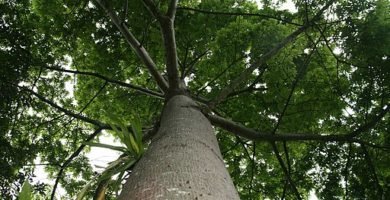
🥇 The Great Amazonian Legend
December 14, 2019

Amazonian myths and legends about ayahuasca
December 14, 2019
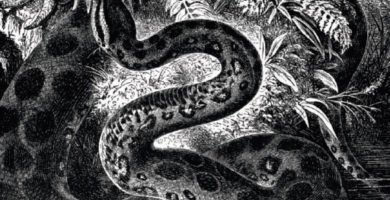
The anaconda in some Amazonian myths and the origin of the Universe
November 28, 2019
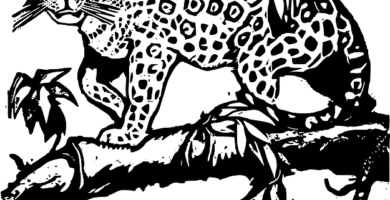
Amazonian Indigenous People Cosmovision – Beliefs, Taboos, Myths and Legends
October 5, 2019
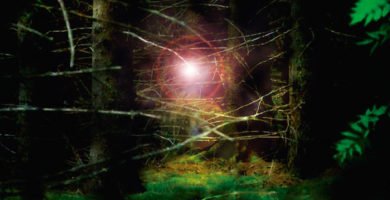
Myths of the Amazon Rainforest
For many psychologists, behavior is the result of a chain of elements, which begin with beliefs, which are followed by words, these by actions, these by values, and these determine the destiny of a person.
The beliefs
Beliefs are systems of concepts and ideas, accepted in the society in which we live, that organize the perception we have about the world and about ourselves.
In these beliefs there are mythical components and non-mythical or rationalized components.
The important thing about a belief, for those who have it, is not that it is false or true, but that it is useful for their survival and gives them certain security in the uncertainty in which their life unfolds. In such a way that people cling to some beliefs, even in the face of evidence presented against them.
Beliefsdetermine a person’s behavior when faced with a given situation, and have a great influence on how one thinks, acts and how one behaves.
The other concept used to define the big questions about life and their answers is that of worldview.
This research will be developed in two parts. The first part will consist of the definition of the concept of worldview and its foundations.
In the second, I will describe, based on this theoretical concept, the forms of mediation used by these indigenous communities to relate to nature in a scenario where there is a generalized idea that all living beings, including human beings, are closely interrelated in a equality plan.
I will explain, then, the two most notable forms of mediation between human beings and nature: through the shamanand through the guardian deities or owners of natural resources.
The shaman and the “owners” or spirits of nature: mediators between two worlds
In the different Amazonian indigenous worldviews there is a general belief that all living beings (animals, plants, human beings) and spiritual beings are equal and share the faculty of being persons, subjects with a human soul, on a plane they call “another world”, where the transforming beings live, although in “this world” appear in their original appearance, that is, as animals and plants.
These two worlds or modes of existence, in which the relationships between nature and human beings take place, are mediated by two instances or elements.
One is the shaman, who has the ability to travel in the two worlds with the appearance of some animals, such as the jaguar.
For this mediation, he uses his knowledge and faculties, some hallucinogenic substances, generally yagé or ayahuasca, or coca, and sacred chants, ánent, amulets, as well as certain rituals.
The other mediation is through the lords or owners of nature, which are spiritual beings who are in charge of caring for the resources of the forest, water and land, applying certain rules that are mandatory for the people who carry out the different subsistence activities that are carried out in the context of the indigenous community.
September 12, 2020
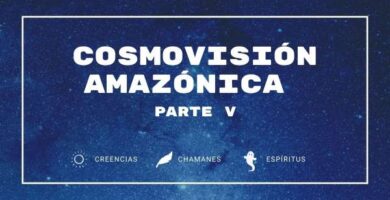
Cosmovision of the Peruvian Amazonian Peoples
September 11, 2020

Cosmovision Definition
September 8, 2020

Amazonian People Cosmovision – Bolivia, Colombia and Ecuador
September 6, 2020
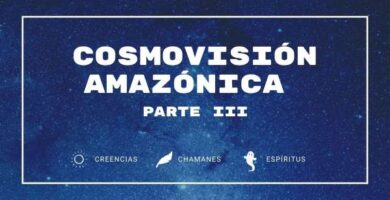
Rainforest People Cosmovision and Amazonian myths
August 25, 2020
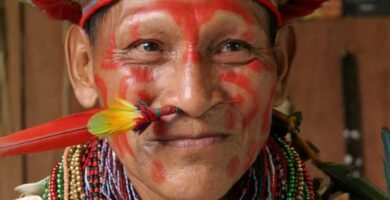
The shaman and his Jaguar Powers – Amazonian Shamanism
Bibliography
- Acosta L.E., Mendoza D. (2006). El conocimiento tradicional en la construcción del desarrollo sostenible en la Amazonía colombiana. Revista Colombia Amazónica, sinchi.org.co./files.
- Andrade E. (2005). Las interrelaciones entre genotipo, fenotipo y medio ambiente. Una aproximación semiótica al debate Evolución o Desarrollo. Revista colombiana de Filosofía de la Ciencia. Vol. V )12-13), 109-142.
- Arias-Gutiérrez R.I., Herrera-Sorzano A., González-Sousa R. (2016). Poblamiento indígena amazónico y desarrollo local en Pastaza, Ecuador. Revista Nov. Pobl. , Vol. 12 (23). La Habana, enero-junio.
- Asp E., Ramchandran K, Tranel D. (2012). Authoritarianism, religious fundamentalism, and the human prefrontal cortex. Neuropsychology, Vol. 26 (4), Julio, 414-421.
- Bargmann C. (2012). Beyond the connectios: How neuromodulators shape neural circuits. Wiley Periodicals.
- Brammer de Rodríguez M. (2015). La voz mágica. El anént shuar como puente sonoro entre los mundos. Estudios Indiana 8, Ibero-Amerikanisches Institut.
- Cartay R. (2016). The Peruvian Amazon table. Ingredients, corpus and symbols. Lima: niversidad San Martín de Porres.
- Castaño-Campos D.A. (1997). Adaptación humana en el Amazonas colombiano: aprovechamiento de suelos desde la cosmovisión indígena. Adaptación_Humana_en_ el_Amazonas_colombiano.
- Chaumeil J.P. (1994). Los yagua. En: Santos-Granero F., Barclay F. (Eds.). Ethnographic Guide to the Upper Amazon. Vol. II, 264-274. Quito: IFEA/ FLACSO Ecuador.
- Delgado-Súmar H.E. (1999). Cultura (Cosmovisión) y Salud entre los Bora. Ayacucho: SerieApuntes de Medicina Tradicional. No. 58. Lime.
- Delgado-Súmar H.E. (1986). Cultura (Cosmovisión) y Salud Entre los Shuar. Ayacucho. Seris Apuntes de Medicina Tradicional. No. 59. Lime.
- Descola P. (2013). Beyond Nature and Culture. Chicago: University of chicago Press.
- Descola P. (1998). La selva culta. Simbolismo y praxis en la ecología de los achuar. Quito: Abya Yala.
- Descola P. (1997). Las cosmologías de los indios de la Amazonía. Mundo Científico, No. 175, enero, 60-65.
- Derrida J. (2008). El animal que luego estoy si(gui)endo. Madrid: Trotta.
- Derrida J. (1971). De la gramatología. Buenos Aires: Siglo XXI.
- Díaz J.L. (2008). La consciencia viviente. México: Fondo de Cultura Económica..
- Dilthey W. (1954). Obras. VIII. Los tipos de concepción del mundo. Mexico: FCE.
- Duchesne-Winter J. (2017). Derrida y ell pensamiento amazónico (la bestia y el soberano/el jaguar y el chamán). Cuadernos de Literatura, Vol. XXI (41), January-June, 168-193. Pontificia Universidad Javeriana. Bogota.
- Eliade M. (1991). Mitos, sueños y símbolos. Madrid: Grupo Libro.
- Esterman J. (2001). Historia de la Filosofía. Tomo III. Curso Integral de Filosofía desde América Latina. Quito: Abya Yala.
- Frankl V. (1973).Psicoanálisis y existencialismo. Madrid: FCE.
- Fuentes C., B. (1997). Huaorani, huarani, cowidi: una aproximación a la política multiétnica ecuatoriana. Quito: Abya Yala.
- Fuster J.M. (2014). Cerebro y Libertad: Los demonios cerebrales de nuestra capacidad para elegir. Barcelona: Ariel.
- Goldman I. (2004). Cubeo Hehénewa Religious Thought Metaphysics of a Nortwstern Amazonian People. New York: Columbia University Press.
- Goulard J.P. (2009). Between mortals and immortals. The self according to the Ticuna of the Amazon. Lima: CAAAP/ IFEA.
- Hall J. (2011). Guyton and Hall. Textbook of Medical Physiology . Philadelphia: Saunders-Elsevier.
- Hillix W., Rombaugh D. (2004). Animals Bodies, Human Minds, Ape, Dolphin, and Parrot Language Skills. New York: Kluber Academic, Plenum Publishers.
- Kandel, E.R, Schwartz J.H., Jessel T.M. (2001). Principios de Neurociencia. Madrid: McGraw Hill.
- Kapogiannis D., Barbery A.K. , Su M., Zanboni G., Krueger F., Grafman J. (2009). Cognitive and neural foundations of religious belief. PNAS. 106 (12), 4876-4881.
- Kensinger K.M. (1998). Los cashinahua. En: Santos F., Barclay F. (Eds.). Guía Etnográica de la Allta Amazonía. Vol. III, 1-124. Quito: IFEA/ Smithsonian Tropical Research Institute.
- Kopenawa D., Albert B. (2010). La chute du ciel: paroles d´un chaman yanomami.Paris: Plon.
- Krueger F., Barbery A.K., Grafman J. (2009).The media prefrontal cortex mediates social event knowledge. Trend. Cogn. Sci., 13 (3), 103-109.
- Krueger F, Grafman J. (2013). The Neural Basis of Human Belief System. New Yok: Psychology Press.
- López-Austin A. (2012). El núcleo de la cosmovisión y la tradición amazónica. En: Broda,J., Báez J. (eds). Cosmovisión, ritual e identidad de los pueblos indígenas de México. México: Consejo Nacional para la Cultura y las Artes/ Fondo de Cultura Económica.
- Macera P., Casanto E. (2011). Asháninca magic cuisine. Lima: Universidad San Martín de Porres.
- Mader E. (1999). Metamorfosis del poder. Persona, mito y visión en la sociedad de shuar y achuar(Ecuador y Perú). Quito: Ediciones Abya Yala.
- Mancuso S., Viola A. (2015). Brilliant Green. The Surprising History and Science of Plant Intelligence. Washington: Island Press.
- Manligano-Antonio R. (2002). El mundo amazónico en su cultura ancestral. Lima: UNMSM.
- Mazzoldi B. (2017). Derrida desde el Sur. La universidad del monte y el pensamiento sin claustro. Popayán: Editorial Universidad del Cauca.
- Melgar-Segovia A. (20 00). El pensamiento: una definición interconductual. Revista de investigación en Psicología, Vol. 3 (1), Julio.
- Muramoto O. (2004.). The role of the medial prefrontal cortex in human religious activity. Med. Hypotheses, Vol. 64 (4), 479-485.
- Nijhout H.F. (2004). Importancia del contexto en la genética. Investigación y Ciencia, Agosto.
- Ochoa, J. (2003). Myth and shamanism in the Amazon. Spain: Editorial Eunate.
- Olortegui-Sáenz J. (2007). Racionalidad amazónica y racionalidad occidental. Thémata. Revista de Filosofía. 39, 539-544. Universidad Nacional de la Amazonía Peruana (UNAP).
- País, El. Madrid, 27.10.2001.
- Patiño-Suaza, A.E., Sandín-Vásquez M.(2014). Diálogo y respeto: bases para la construcción de un sistema de salud intercultural para las comunidades indígenas de Puerto Nariño, Amazonas, Colombia. Salud Colectiva, Vol. 10 (3). Buenos Aires.
- Plháková A. (2010). Las etnias indígenas del Ecuador. Olomouci: Universzita Palackého.
- Pueblos Originarios. (2017). Shuar. Tardecroasta.wordpress.com /2017/05/13/cultura shuar/historia-cosmogonia.html.
- Radnikow G., Foldmeyer D. (2018). “Layer” and cell type-specific modulation of excitatory neuronal activity in the neocortex. Front. Neuroanatom, 12 (1). Doi: 10.3389 (fnana.2018.00001.Consultado el 01.04.2020.
- Reichel-Dolmatoff G. (1997). Cosmology as ecological analysis: a rainforest perspective, 7-20. In: Reichel-Domatoff G. Shamans of the rainforest: essays on the Tukano Indians of the northwestern Amazon . Great Britain: Themis Books.
- Reichel-Dolmatoff G. (1975). The Shaman and the Jaguar. Philadelphia: Temple University Press.
- Reichel-Dussan A. (1988). Patrones cognitivos. Bogotá: Universidad de los Andes.
- Restrepo A, R. (1998). Cosmovisión, pensamiento y cultura. Revista Universidad Eafit, julio-agosto-septiembre, 32-42.
- Ridley M. (2004). Qué nos hace humanos. México: Taurus.
- Rojas-Zalezzi E. (1994). Los asháninka: un pueblo tras el bosque. Lima: PUCP.
- Sanabria-Diago D.L. , Argueta-Villamar A. (2015).Cosmovisiones y naturalezas en tres culturas indígenas de Colombia. Etnobiología. Vol. 13 (2) 5-20.
- Santos-Granero F. (2004). Los yanesha, 163-359. En: Santos F., Barclay F. (Eds.). Ethnographic Guide to the Upper Amazon. Vol. VIII. Quito: IFEA/ Smithsonian Tropical Research Institute.
- Seitz-Lozada G.M. (2007). Ruptura generacional en las comunidades nativas awayún shushug, nayumpim y wawas durante las últimas décadas, 125-150. En: SEPIA. Género y gestión de recursos naturales. Lima: SEPIA.
- Shackt J.(2013). A People Stories in the Forest of Myth. The yukuna of Miritiparaná. Oslo: Instituttet for Sammenlignende Kulturfurskning.
- Skinner B.F. (1975). Sobre el conductismo. Barcelona: Fontanella.
- Surrallés A. (2007). Los candoshi, 245-375. En: Santos F., Barclay F. (Eds.). Ethnographic Guide to the Upper Amazon. Vol. SAW. Lima:Smithsonian Tropical Research Institute.
- Szabó H.E. (2008). Diccionario de la Antropología Boliviana. Santa Cruz de la Sierra, Bolivia: Países Bajos/ Aguarague.
- Vacas-Moras V. (2008). Cuerpos, cadáveres y comida: canibalismo, comensalidad, y organización social en la Amazonía. Antípoda. Revista de Antropología y Arqueología. No. 6, enero-junio, 271-292. Universidad de los Andes, Colombia.
- Valverde F., De Carlos J., López L. (2003). The cerebral cortex of mammals: diversity within unity. En: Schuez A., Miller R. (Ed.). Cortical Areas . Unity and Diversity. C.R.S. Press.
- Van der Hammen M.C. (1991). El mmanejo del mundo. Naturaleza y sociedad entre los Yukuna de la Amazonía colombiana. Utrecht, Netherlands: ISOR/RUC.
- Vendejo-García A., Bechara A.,. 2010. Neurofisiología de las funciones ejecutivas. Psicothema, Vol. 22 (2), 227-235. Universidad de Oviedo, España.
- Viveiros de Castro E. (2013). The look of the Jaguar. Buenos Aires: Tinta Limón.
- Viveiros de Castro E. (2003). Shamanism and sacrifice: an Amazonian commentary, 335-347. in: Chaumeil J.P., Pineda-Camacho R., Bouchard J.F. (eds.). Shamanism and sacrifice. Archaeological and enological perspectives on indigenous societies in South America. Bogotá: French Institute of Andean Studies.
- Viveiros de Castro E. (1996). Os pronomes cosmológicos e o perspectivismo amerindio. Mana. Estudos de Antropología. Vol. 27 (28), 55-89.
- Wagensberg J. (2000). Complexity versus Uncertainty: The question of Staying Alive. Biology and Philosophy, 15: 493-508.
- Wright R. (2013). Mysteries of the Jaguar Shamans of the Nortwest Amazon. Lincoln-London: University of Nebraska Press.
This post is also available in:
![]() Español (Spanish)
Español (Spanish)
